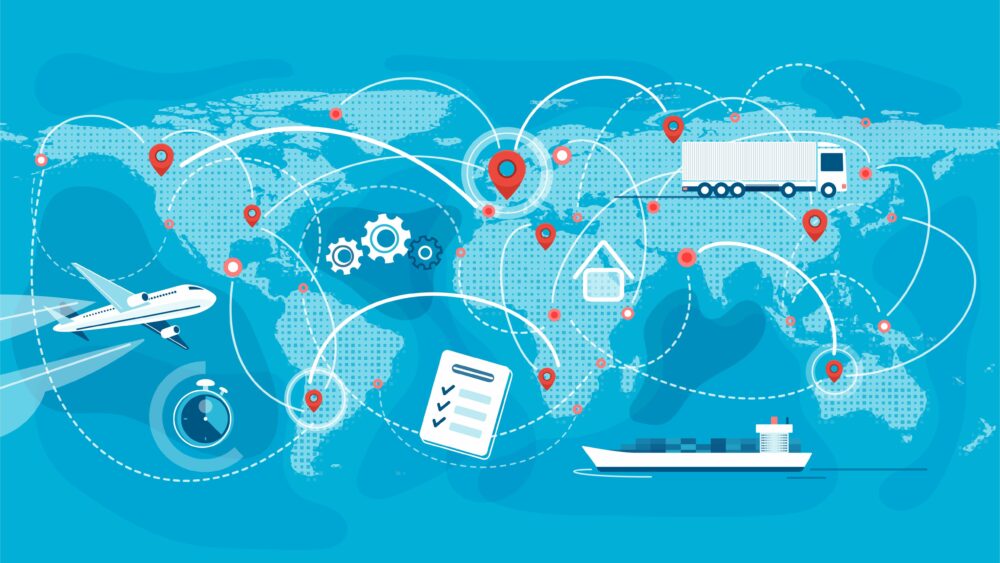About a year-and-a-half ago, you may have read an article here in which Sanjay Ahire explained how “Supply chain problems will work themselves out, but it will take some time.” Now, with things being somewhat better but still far from what we once thought was “normal,” seems a good time to check back in with Dr. Ahire.
Things are better, in so many ways. It’s nothing like those days in 2020 when entire rows of essential products were missing. But still, you might go to the grocery store or pharmacy to pick up something routine such as a bag of frozen fruit, or a bottle of over-the-counter antacid, and find that part of the shelf empty. It’s an experience that wouldn’t have even caused comment in the Soviet Union, but doesn’t seem right to you as a resident of a country that you thought had mastered the art of meeting consumers’ every expectation.
“The supply chain is a very complex business,” Dr. Ahire, the Michael J. Mungo Distinguished Professor and co-director of the Operations and Supply Chain Center in the Management Science Department at the Darla Moore School of Business, reminds us. It’s governed by the two most basic concepts in economics – supply and demand. But there’s nothing basic, or at least nothing simple, in the way those elements interact around the globe in the 21st century. “Lots of things have to go the right way to deliver things at the right time at prices customers are willing to pay.”
You’re dealing with “a lot of macro factors and global events,” he explains, and “Performance depends on how you balance demand with supply.”
And not all the stresses of the last three years have occurred on the supply end. It’s not just about factories being temporarily shut down, or the earthquakes in labor markets, or the inability of seaports to keep up with the flow of products. Some very complicated things have happened in terms of what consumers are looking for.
When COVID closed their workplaces, consumers focused on essentials for the home: new furniture or remodeling to create a home office, upgrades to wifi, groceries to cook at home, and such humble things as having enough toilet paper. Meanwhile, they had zero interest in going out to eat or to see a movie.
But when things opened up, there was “a lot of pent-up demand” for the things folks had been going without. They wanted to get back out there with a vengeance, to travel and eat out and see interesting things even more than they had before. And markets had to scramble to catch up, even as businesses faced new problems that made it harder to meet even lesser levels of demand. Take the restaurant industry, which found it next to impossible to hire as many cooks and waiters and cleaning crew as they had before. Those workers had moved on.
“Demand can go up and down in a flash,” says Dr. Ahire. And “whether you’re in the manufacturing or distribution sector” – or for that matter, in the services sector – “It takes time to unwind the tangles,” even when people are no longer wearing masks to ward off COVID.
The cost of doing business went up, which meant demands might be met, but only at a higher price. Which means inflation, which leads to changes in monetary policy.
So inflation is bad for sorting out the supply tangles, right? Well, yes and no. If central bankers react to inflation by cooling off the economy, demand goes down, and suddenly the goods that were scarce before prices went up start to stack up in warehouses.
“It helps the supply chain,” says Dr. Ahire. “It can build up capacity.” That’s “good news for the supply chain – but not good for the economy.”
Then there’s geopolitics. “You cannot overestimate the impact of the Russia-Ukraine war” on prices and availability of goods. Also, America has started to worry about depending on China for the production of so many in-demand products. Political leaders on both ends of the spectrum start pushing “buy American” policies – or at least, policies that encourage getting things from other countries that are not our chief economic rival and potential future military threat.
Describing the way this or that force affects the supply chain, Dr. Ahire offers an image: “Like a pendulum, it swings.” It’s just that now, there are a lot of different pendulums swinging, and interfering with each other’s arcs.
But don’t despair, he counsels. We’re “still in a much better place than in 2022.” But as the pendulums swing, things will get better here, and worse there. And sometimes they’ll swing in a direction and create opportunities that at this moment can’t be predicted.
In any case, it’s complicated. And getting fully back to “normal” – depending on how we define that term – will still take time.



Comments are closed.